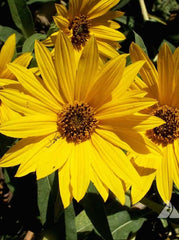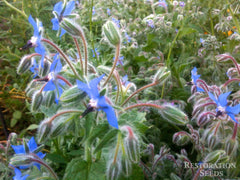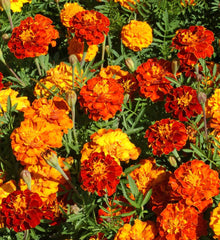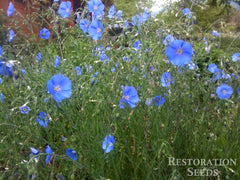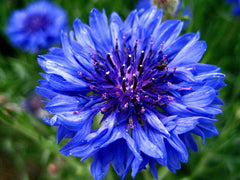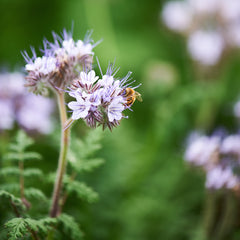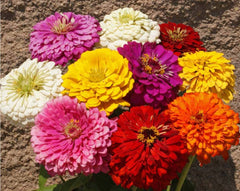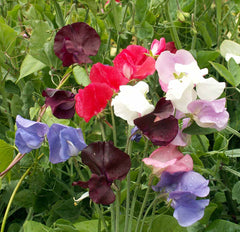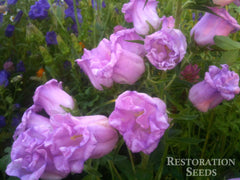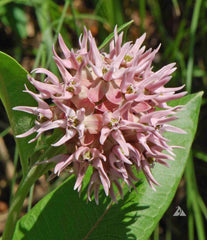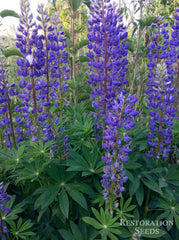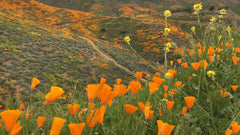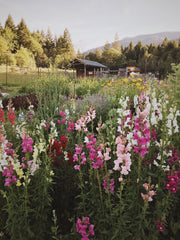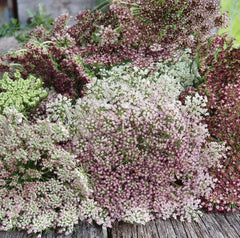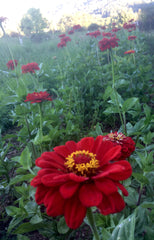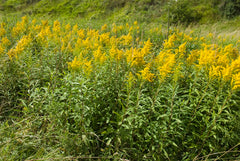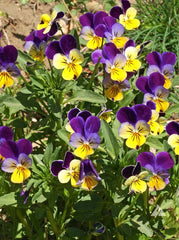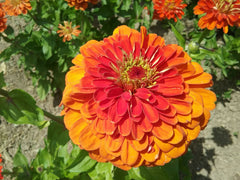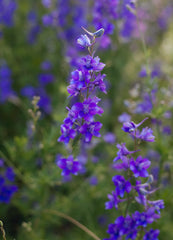Shasta Daisy (OG)
shasta-daisy Shasta Daisy Leucanthemum x superbum
HOW TO GROW SHASTA DAISY
Start 6-8 weeks indoors before last frost, plant out after last frost. Direct seed 2 months before last frost or 2-4 weeks before first frost. Drought tolerant. Divide plant in third year. Seeds require light to germinate, press into soil, do not cover. Soil pH 6-8. Hardiness zones 5-9. Perennial.
Usual seed life 3 years.
Planting Depth surface requires light
Soil Temp. Germ. 70˚F
Days to Germ. 10-20
Plant Spacing 12-24”
Row Spacing 3-5’
Days To Maturity 120
Full Sun, Moist Well Drained
Usual seed life 3 years.
Planting Depth surface requires light
Soil Temp. Germ. 70˚F
Days to Germ. 10-20
Plant Spacing 12-24”
Row Spacing 3-5’
Days To Maturity 120
Full Sun, Moist Well Drained
- 100 Seeds$3.25
- 1000 Seeds$18.50
The Shasta Daisy grows 3-4’ tall, almost 50% taller than the Dwarf Shasta Daisy variety. It blooms 30 days after Dwarf Shasta Daisies, for much of the summer. Brilliant white beautiful daisy that makes for an excellent cut flower. After 17 years of development, the Shasta Daisy was released by American horticulturis...
The Shasta Daisy grows 3-4’ tall, almost 50% taller than the Dwarf Shasta Daisy variety. It blooms 30 days after Dwarf Shasta Daisies, for much of the summer. Brilliant white beautiful daisy that makes for an excellent cut flower. After 17 years of development, the Shasta Daisy was released by American horticulturist Luther Burbank in 1890. This Beautiful ground cover plant was named after Mount Shasta, in Northern California, because its petals were the color of the snow. Perennial plants compete well in a grassy meadow once established. Formerly classified as Chrysanthemum maximum. These daisies were transferred to their own genus of Leucanthemum, because they lack some traits of true Chrysanthemum species. Tags: Harvest: June to August, Color: White, Specialty: Deer Resistant, Certification: Organic.
It originated as a hybrid produced in 1890 by the American horticulturist Luther Burbank from a number of daisies. First, he crossed Leucanthemum vulgare with Leucanthemum maximum; this double hybrid was itself crossed with Leucanthemum lacustre.The resulting Leucanthemum triple hybrid was crossed with Nipponanthemum nipponicum, creating an intergeneric cross of species from three continents. It was named after Mount Shasta, because its petals were the color of the snow. Some members of the genus are considered noxious weeds, but the Shasta daisy remains a favorite garden plant and groundcover.
It originated as a hybrid produced in 1890 by the American horticulturist Luther Burbank from a number of daisies. First, he crossed Leucanthemum vulgare with Leucanthemum maximum; this double hybrid was itself crossed with Leucanthemum lacustre.The resulting Leucanthemum triple hybrid was crossed with Nipponanthemum nipponicum, creating an intergeneric cross of species from three continents. It was named after Mount Shasta, because its petals were the color of the snow. Some members of the genus are considered noxious weeds, but the Shasta daisy remains a favorite garden plant and groundcover.
Learn More
Meet Your Farmer
We promote fair trade, organic practices and environmental responsibility throughout the Restoration Seeds supply chain. Below are the family farmers and seed suppliers who bring our open pollinated seeds to you.
Restoration Seeds
Certified Organic by OR Dept. of Ag.
Seed grower since 2009


Restoration Seeds is a farm-based seed company committed to selling seeds growers can save. We guarantee high quality seeds through our extensive variety trialing and plant breeding programs. We empower family farmers and home gardeners by offering 100% Open Pollinated seeds. flower Harvest: June to August, Color: White, Specialty: Deer Resistant, Certification: Organic
Reviews
